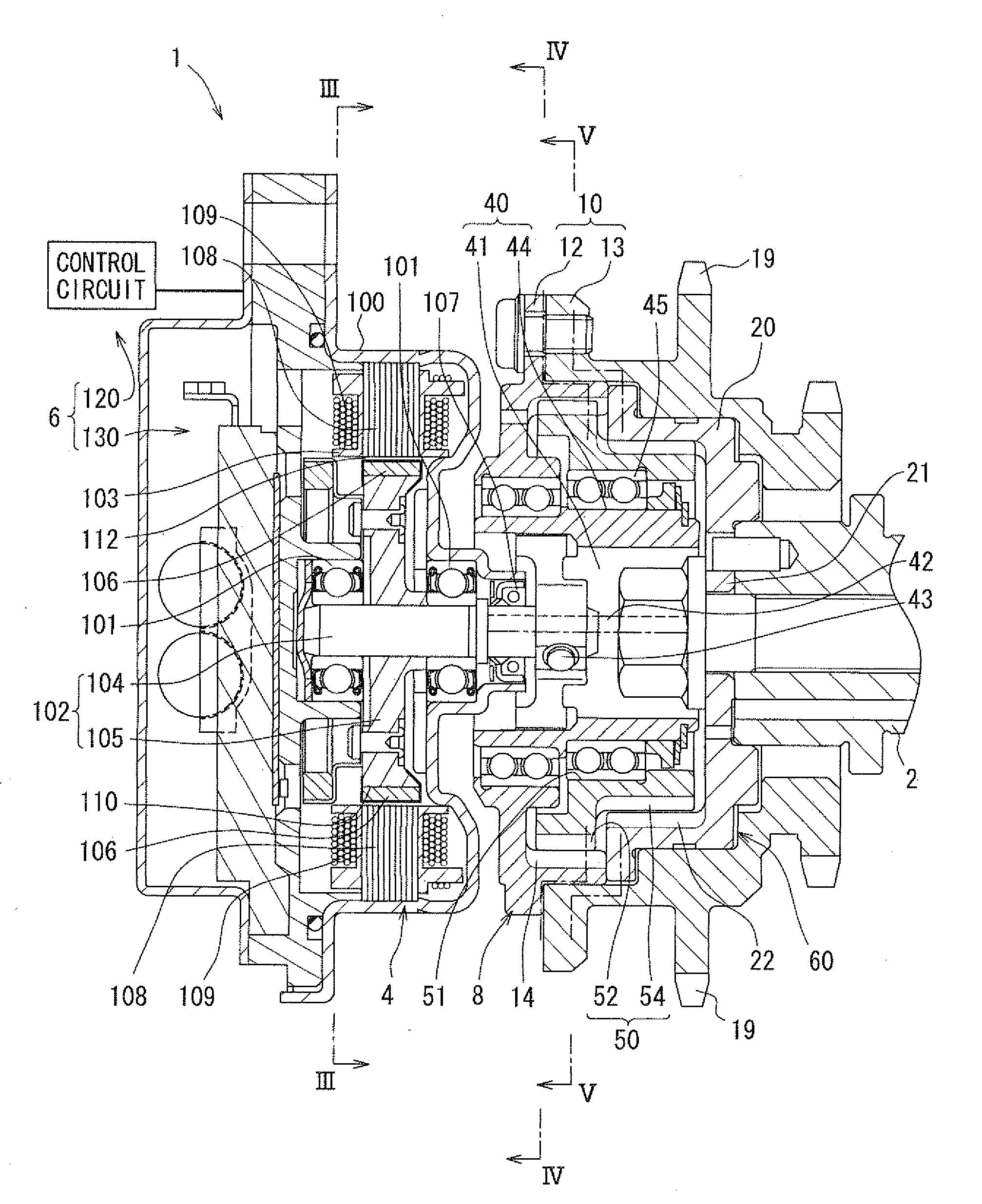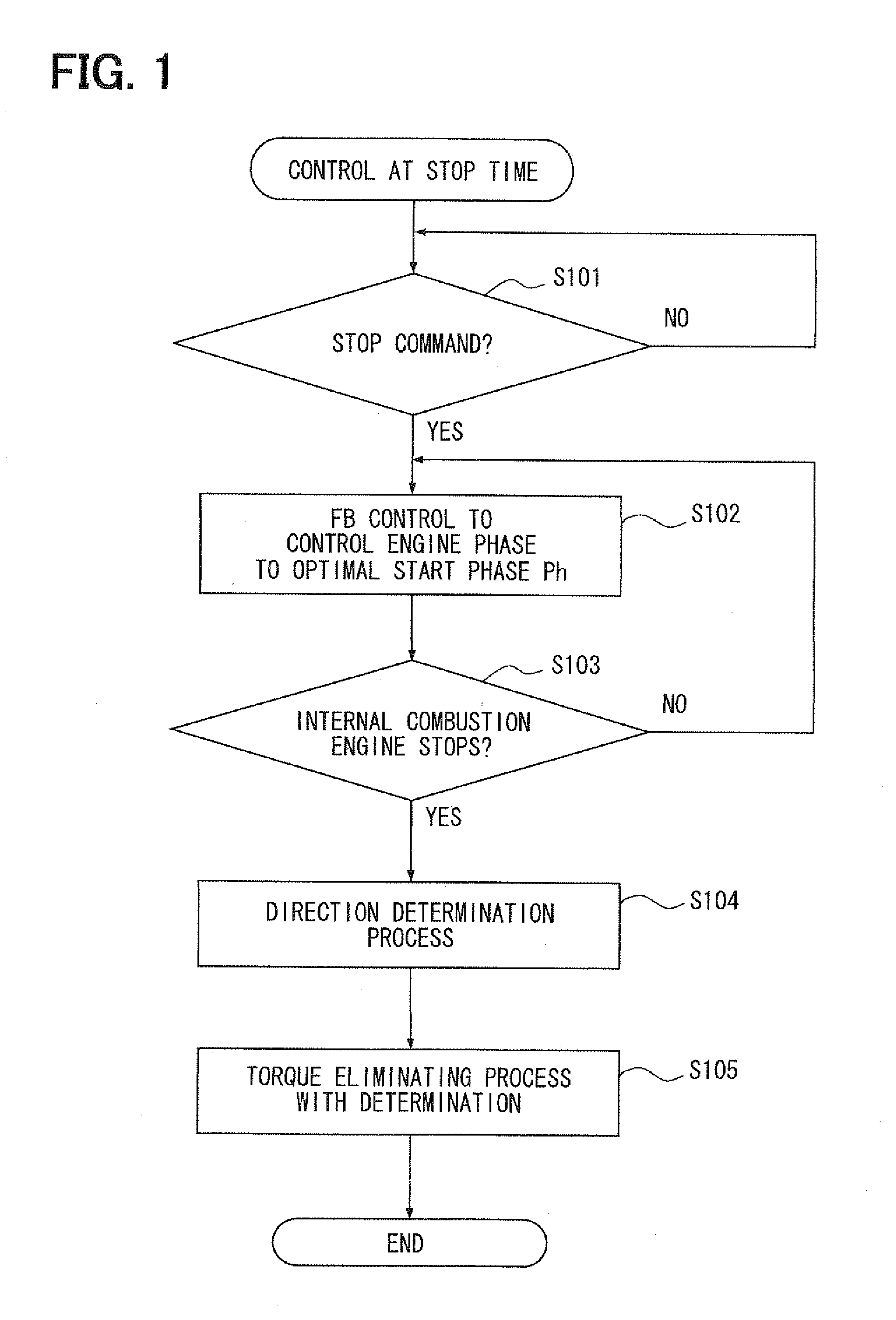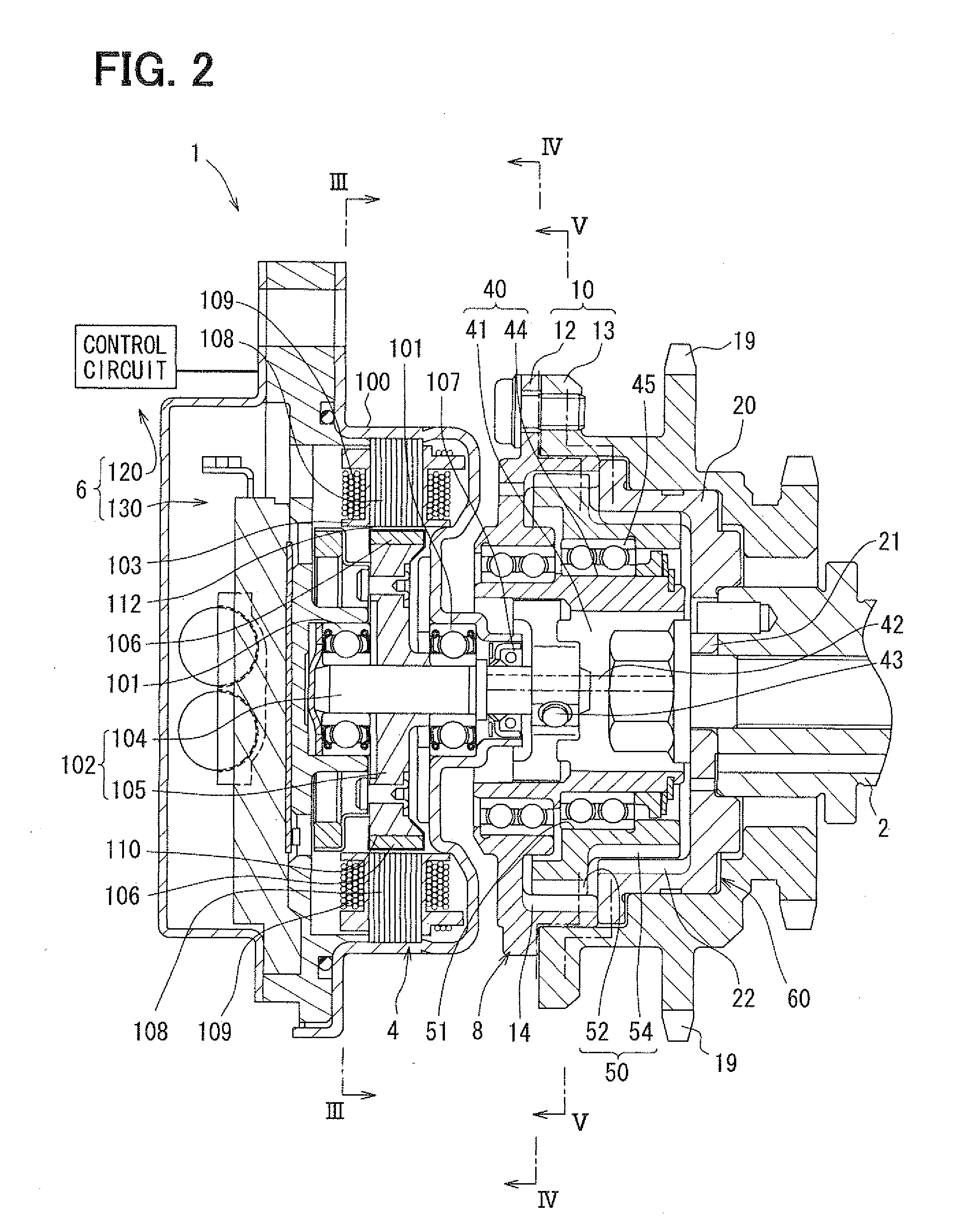Valve timing control device
- Summary
- Abstract
- Description
- Claims
- Application Information
AI Technical Summary
Benefits of technology
Problems solved by technology
Method used
Image
Examples
first embodiment
[0109]FIG. 2 shows a valve timing control device 1 according to a first embodiment. The valve timing control device 1 is provided in a transmission system mounted in a vehicle for transmitting engine torque from a crank shaft (not shown) to a cam shaft 2 of an internal combustion engine mounted in a vehicle.
[0110]Hereinafter, a basic construction of the valve timing control device 1 will be explained. The valve timing control device 1 can be configured to combine an electric motor 4, a power supply control system 6 and a phase control mechanism 8, and controls an engine phase between the crank shaft and the cam shaft 2 for determining valve timing. In the present embodiment, the cam shaft 2 opens / closes an intake valve (not shown) of the internal combustion engine, and the valve timing control device 1 controls the valve timing of the intake valve.
[0111]As shown in FIG. 2 and FIG. 3, the electric motor 4 can be a brushless motor provided with a housing 100, bearings 101, a motor sha...
second embodiment
[0161]A second embodiment is, as shown in HG. 15, a modification of a first embodiment. In the torque eliminating processing with the correctness / incorrectness determination by S105 in a second embodiment, after correctness / incorrectness of the determination direction Dca0 is determined according to a first embodiment, a brake torque is applied to the motor shaft 102 to gradually eliminate the motor torque Tm.
[0162]More specifically, after the control circuit 120 makes the correctness / incorrectness determination of the determination direction Dca0 to balance the torques Tm, Tca and Th, the control circuit 120 first sets the target rotational number St, the target rotational direction Dt and the target drive system Ft as the OR control values and outputs the results to the power supply block 134 of the drive circuit 130. The target rotational number St is set as a predetermined intermediate value between an initial value at a correctness / incorrectness determination time and a zero va...
third embodiment
[0167]As shown in FIG. 16, a third embodiment is a modification of a first embodiment. In the control processing at the stop time in a third embodiment, S104 is not executed after executing S101 to S103, and the torque eliminating processing with the direction determination is executed as S204, different from S105 of a first embodiment.
[0168]More specifically, at S204, except for setting the target rotational direction Dt to a set direction Ds, which is determined in advance, the motor torque Tm corresponding to the initial value of the target rotational number St is first generated according to the correctness / incorrectness determination of the determination direction Dca0 in a first embodiment.
[0169]Thereby, when the motor torque Tm is generated in the set direction Ds to correctly oppose the cam torque Tca, the motor torque Tm balances with the torques Tca and Th without rotation of the motor shaft 102 or when the motor shaft 102 slightly rotates in the reverse direction of the s...
PUM
 Login to View More
Login to View More Abstract
Description
Claims
Application Information
 Login to View More
Login to View More - R&D
- Intellectual Property
- Life Sciences
- Materials
- Tech Scout
- Unparalleled Data Quality
- Higher Quality Content
- 60% Fewer Hallucinations
Browse by: Latest US Patents, China's latest patents, Technical Efficacy Thesaurus, Application Domain, Technology Topic, Popular Technical Reports.
© 2025 PatSnap. All rights reserved.Legal|Privacy policy|Modern Slavery Act Transparency Statement|Sitemap|About US| Contact US: help@patsnap.com



